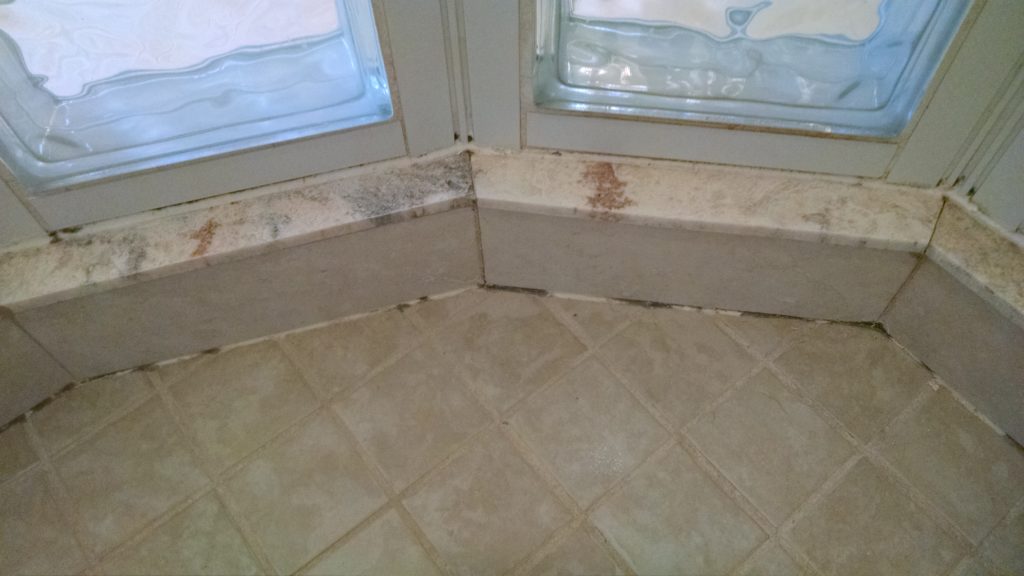This is a master bathroom shower with ceramic tile walls and flooring with a travertine tile curb. The homeowners are having issues with mildew on the grout, caulk, and travertine tile. There have been multiple repairs over the years with the wrong types of caulk. I had to tear out all the old patch work and replace it with the correct grout.

All the soap scum and mildew from the grout and tile were removed with restoration cleaners and the grout was allowed to dry. All the bad caulk and grout were removed. Most areas were replaced with grout mixed with a 100% latex additive. I used a silicone designed for showers where the tile met the glass partition.
Caulk, silicone, or grout in a stone shower?
I use caulk as little as possible in stone or ceramic showers. Especially acrylic latex since they are prone to mildew and are not meant to be used in heavy water areas since the water “softens” the caulk. Silicone does not work good on porous materials such as grout and natural stone. It allows moisture to seep underneath causing delamination or allowing mildew and algae to grow underneath where you can’t clean it. Grout is usually the way to go.

After the restoration, the grout and stone is heavily sealed with a professional grade sealer designed for use in porous stone. I recommend re-applying the sealer every 2 years professionally and inspecting the grout and caulk at the same time.

Proper Installation for Stone or Ceramic Showers
Showers that don’t have the correct fall in the flooring always create more issues and maintenance. Fall allows the water to drain away properly. It’s very important to have a highly recommended tile installer when getting a new stone shower. If you can’t find or don’t know of one, please call me and I can give you some contacts. You may pay more up front for a good installer, but not in the long run.